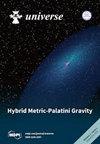Calibration of Polarization Data for Vector Magnetographs at the Huairou Solar Observing Station over the Past Four Decades
IF 2.5
4区 物理与天体物理
Q2 ASTRONOMY & ASTROPHYSICS
引用次数: 0
Abstract
The Huairou Solar Observing Station (HSOS) has conducted solar vector magnetic field observations for 40 years and developed multiple vector magnetographs (including one space magnetic field observation instrument). Using these accumulated magnetic field observation data, HSOS has achieved significant progress in solar physics research, including important advancements in the helicity sign rule of solar active regions, the helicity characteristics of strong and weak magnetic fields in active regions, the chromospheric magnetic field characteristics of the Sun, the evolution of magnetic fields in active regions, and the extraction of magnetic field characteristics for flare precursors. However, due to historical reasons, the calibration of vector magnetic field data in HSOS are not standardized. Therefore, this paper summarizes past historical experiences and introduces the standardized calibration procedure for vector magnetic field processing in detail. These calibration procedures are the basic steps of the calibration process for the space vector magnetograph (Full-Disk Vector MagnetoGraph, abbreviated as FMG) observation data, and are also applicable to the calibration of other instrument observation data at HSOS. They mainly include basic processing of polarization data and in-depth processing of vector magnetic fields. We believe that such calibration processing of the historical data collected by HSOS over the past 40 years will help us to accurately measure and analyze the solar magnetic field, further revealing the laws of solar activity and its impact on the Earth’s environment.过去四十年怀柔太阳观测站矢量磁强计极化数据的校准
怀柔太阳观测站(HSOS)开展太阳矢量磁场观测已有 40 年,研制了多台矢量磁力仪(包括一台空间磁场观测仪)。利用这些积累的磁场观测数据,怀柔太阳观测站在太阳物理研究方面取得了重大进展,包括在太阳活动区的螺旋符号规律、活动区强弱磁场的螺旋特征、太阳色球层磁场特征、活动区磁场演化、耀斑前兆磁场特征提取等方面取得了重要进展。然而,由于历史原因,HSOS 中矢量磁场数据的校准并不规范。因此,本文总结了以往的历史经验,并详细介绍了矢量磁场处理的标准化校准程序。这些校准程序是空间矢量磁力仪(Full-Disk Vector MagnetoGraph,简称FMG)观测数据校准过程的基本步骤,也适用于恒星观测系统其他仪器观测数据的校准。它们主要包括偏振数据的基本处理和矢量磁场的深入处理。我们相信,对恒星观测系统过去40年收集的历史数据进行这样的校准处理,将有助于我们准确地测量和分析太阳磁场,进一步揭示太阳活动的规律及其对地球环境的影响。
本文章由计算机程序翻译,如有差异,请以英文原文为准。
求助全文
约1分钟内获得全文
求助全文
来源期刊

Universe
Physics and Astronomy-General Physics and Astronomy
CiteScore
4.30
自引率
17.20%
发文量
562
审稿时长
24.38 days
期刊介绍:
Universe (ISSN 2218-1997) is an international peer-reviewed open access journal focused on fundamental principles in physics. It publishes reviews, research papers, communications, conference reports and short notes. Our aim is to encourage scientists to publish their research results in as much detail as possible. There is no restriction on the length of the papers.
 求助内容:
求助内容: 应助结果提醒方式:
应助结果提醒方式:


